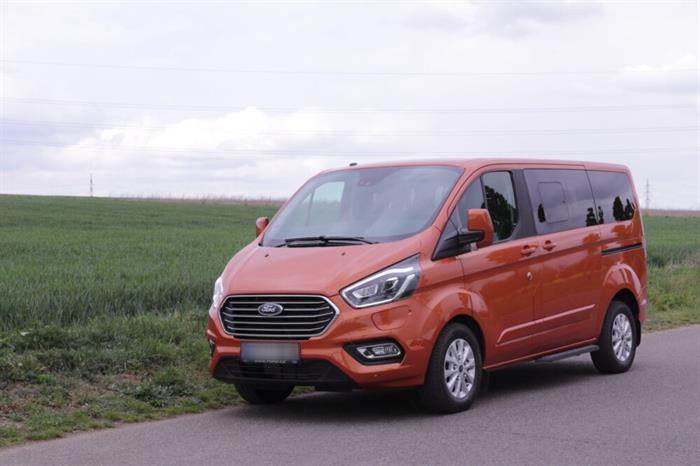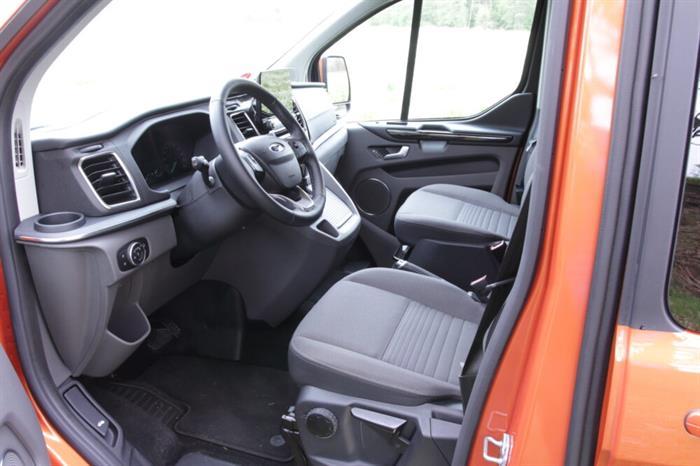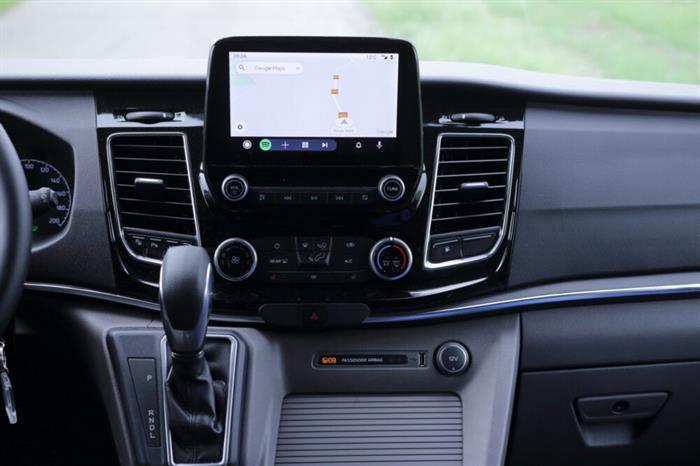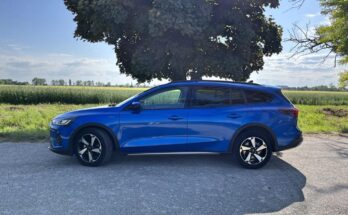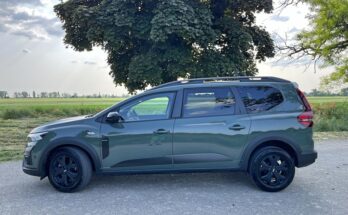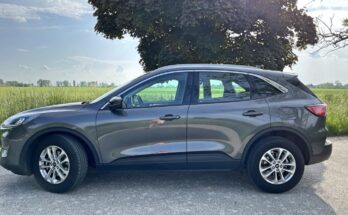Classic diesel engines and mild hybrids are complemented by a new plug-in hybrid that combines a liter gasoline engine with a battery that promises a range of up to 50 km. Who could prefer a hybrid drive to years of proven diesels? In my opinion, it will mainly appeal to large families who have to travel to Prague every day (unfortunately, it is a large car and so the 70g of CO2 emissions will not fit into the limit for free parking) they will use electricity for daily commuting and for occasional longer trips they are not limited by range and there is no need plan your trip with chargers in mind.
Exterior
In the new generation, the Tourneo has a very massive and distinctive radiator grille. The headlights are bi-xenon, they shine brilliantly and have the function of automatic switching between high beam and low beam, the outline of the headlights complements the daytime running lights.
Unlike traditional engines, the hybrid is only available in the short L1 variant, with a wheelbase of 2933 mm.
What surprised me was the distinctive lock on the left front door, I don't even remember when I saw such a solution.
Interior
After sitting behind the wheel, you will be pleasantly surprised by the ergonomics and the quality of the materials used, thanks to the wide range of positioning options, it is easy to find a comfortable position. I appreciate that Ford hasn't succumbed to the trend of replacing the classic air conditioning controls with just an item on the display, and they're staying true to the traditional rotary controls.
The interior has a lot of different boxes, compartments and holders for cups or bottles, you can see that there is a basis in the commercial Transit.
Tourneo Custom offers great space variability, the second row of seats can be turned both forward and against the direction of travel, the middle seats in both rows can be folded down to create a practical table. The backrests are adjustable in several angles and, thanks to their size, offer comfort to all passengers. When the rear seats are not in use, we can simply fold down the backrests or fold them forward together with the seats and lock them in a vertical position. Seats folded in this way can also be moved together and thereby increase the luggage space, but due to the weight of the seats, this will probably not be a widely used option. The disadvantage is the massive rear pillar, which is in the Tourneo unlike the cargo Transit. The battery is located under the floor, so it does not take anything away from the usability of the interior space and also contributes to a low center of gravity and thus to favorable driving characteristics.
I was pleasantly surprised by the infotainment SYNC 3, the display is well located in the upper part of the dashboard and therefore easy to see and easy to control. The user interface is clear and works quickly, there is also the option of voice control, but dictating the address into the navigation is quite tedious and it seems to me that a better option is to use the connection with the phone. Android Auto works reliably, in addition, it is possible to use both the USB under the radio and the second port inside the box on the dashboard in front of the driver. However, every passenger was thought of, so there are 6 more USBs available for charging.
Drive
The hybrid Tourneo has an unconventional drive system, it always uses a 92 kW electric motor for propulsion. The one-liter three-cylinder EcoBoost then only drives the generator, and the car's drive is still handled by an electric motor.
According to the NEDC, a battery with a capacity of 13.6 kWh should offer a range of up to 56 km. However, according to my experience, the range on the battery was only slightly above 30 km, despite the effort to drive economically with the air conditioning turned off and occupancy by two people. As a possible explanation for the difference, it is offered that the range could correspond to, for example, the cargo Transit, six robust seats can significantly increase the weight and therefore the consumption. The internal combustion engine is not just a "range extender", it has sufficient power for full-scale operation and the range on a full tank is a nice 500 km according to NEDC.
The driver can choose between 4 operating modes of the hybrid system: automatic, battery-only operation, battery charging and battery maintenance.
The expression of the gasoline engine is very refined, no significant vibrations are transmitted into the space, and the sound insulation of the engine compartment is excellent. Also, due to the fact that the EcoBoost revs itself and not the position of the gas pedal, there were many times I wasn't even sure if the engine was even running. In short, a huge difference compared to diesel engines.
At low speeds up to about 50 km/h it has great acceleration, after that the response to pressing the gas is more lukewarm, the maximum speed is limited to 120 km/h .
The supplied 10A 230V charger can handle charging in approximately 5 hours, when charging with maximum power, for example from a wallbox, it takes approximately half the time.
I see as a minor drawback that the FordPass mobile application shows the current range based only on the fuel in the tank and does not take the battery into account.
It's a shame that, unlike the classic variants, the hybrid does not have adaptive cruise control or active lane keeping.
Conclusion
Although there are several electric vans on our market, they are still gaining ground among the diesel competition. However, mainly due to increasingly strict emission limits, this option looks like the way of the future.
Price from CZK 1,418,967 until June 30, special price CZK 1,219,900


